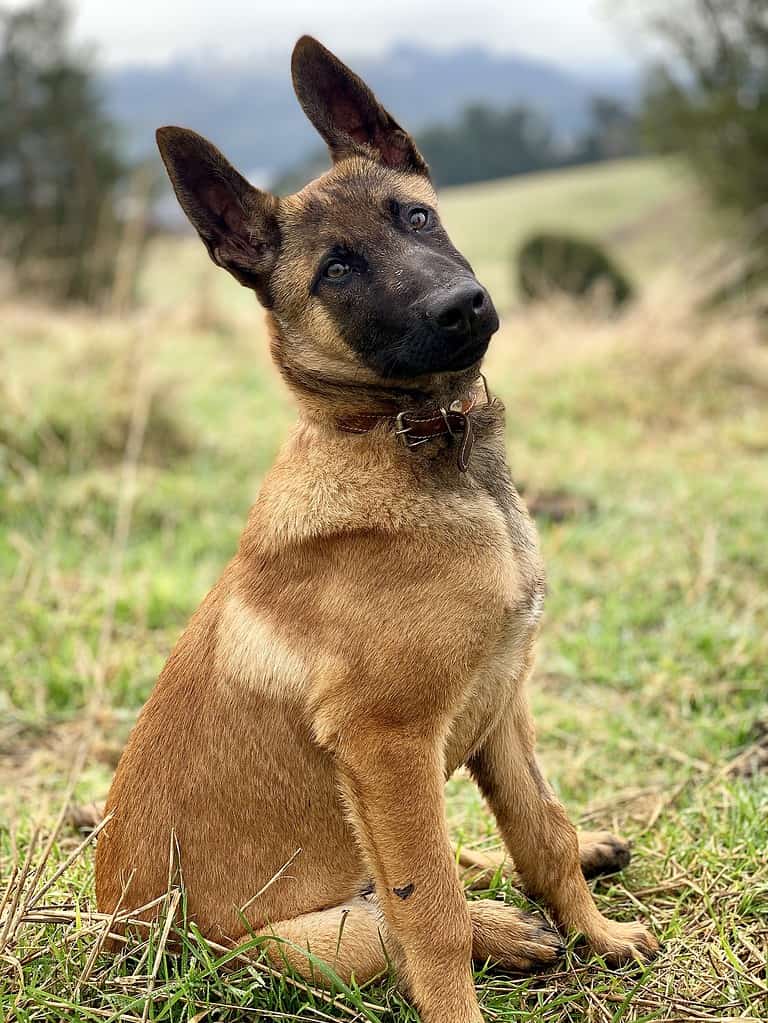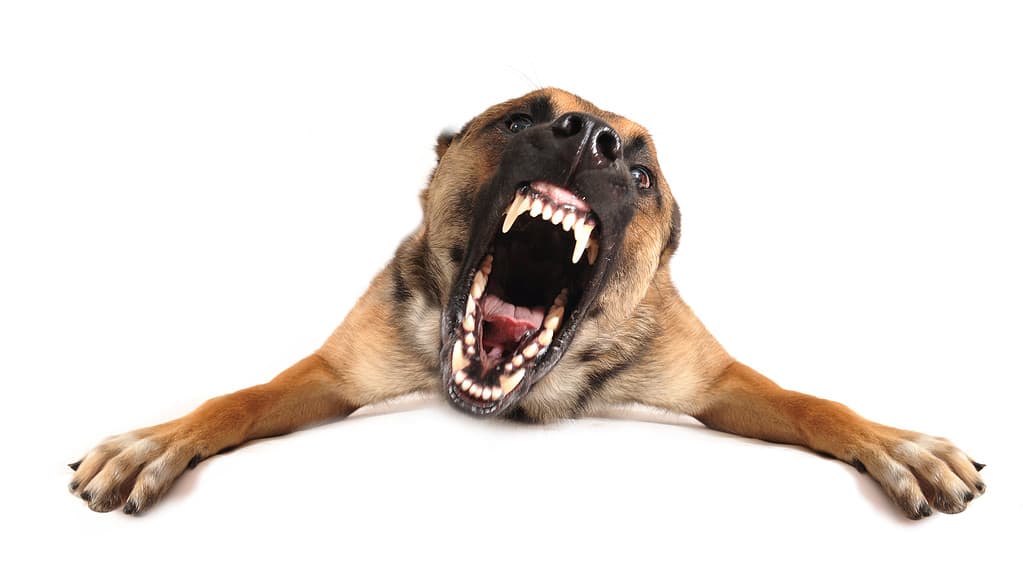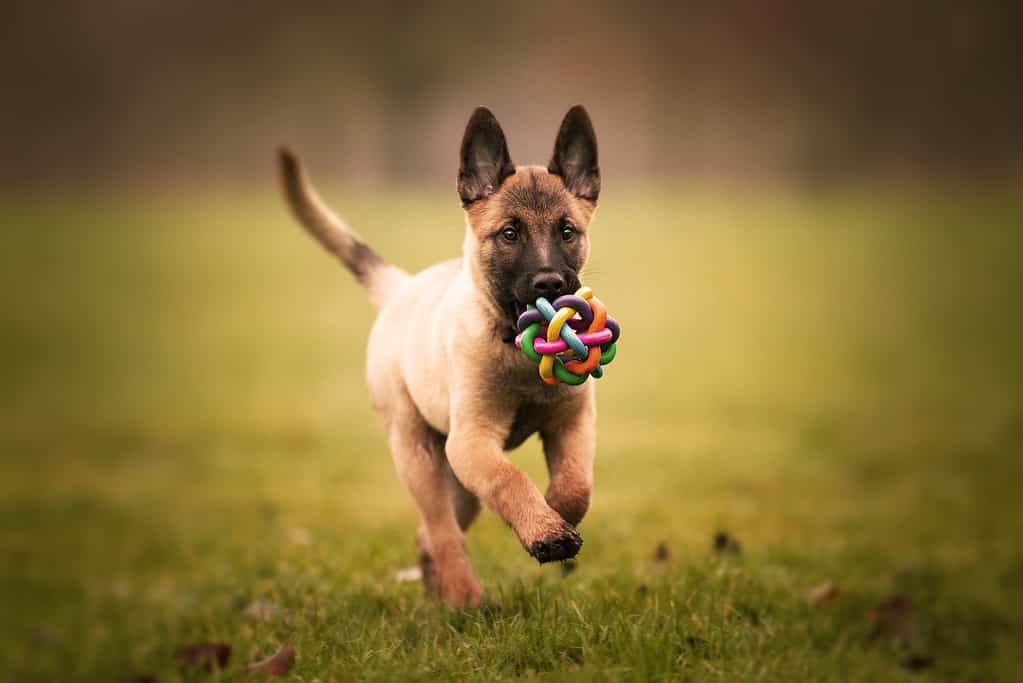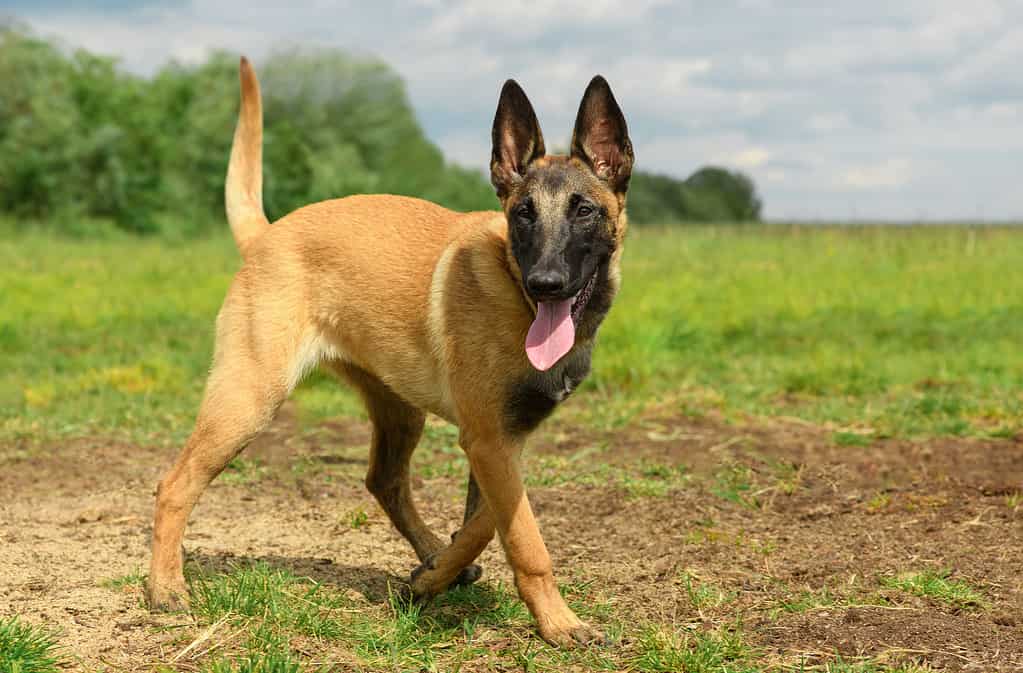Has a Belgian Malinois captured your heart and made its way into your family? Congratulations! You’ve got yourself a very loyal, energetic, and fun companion. This guide will help you understand what to expect in terms of your Belgian Malinois’ size, as well as make decisions that will make them a happy pupper.
Here are the major growth milestones, timelines, and more to watch out for.
Belgian Malinois Summary

This breed is known for its beauty, fierceness, and exceptional intelligence.
©Tomás de la Maza / CC BY-SA 4.0 – License
Belgian Malinois, also known as the Belgian shepherd or the Belgian sheepdog, is a medium-sized sheep-herding dog. As you might have guessed, this breed has its roots in Belgium.
It is quite similar to the German shepherd but slenderer and — as some would argue — more elegant in build.
They’re known for their valor, great trainability, and intelligence, which is one of the reasons why they serve as military dogs. While great in a military environment, potential owners should be aware of this breed’s “policing” tendencies.
Belgian Malinois Growth and Weight Chart by Age
Below, we’ll provide an average weight range for an average Belgian Malinois varying by age. However, remember that the weight will also depend on the individual dog, as well as the sex. Females are typically lighter than males.
| Age | Weight |
|---|---|
| 1 Month | 4-9 lbs |
| 2 Months | 6-13 lbs |
| 3 Months | 15-22 lbs |
| 4 Months | 19-26 lbs |
| 5 Months | 24-35 lbs |
| 6 Months | 26-37 lbs |
| 7 Months | 33-44 lbs |
| 8 Months | 35-48 lbs |
| 9 Months | 37-51 lbs |
| 10 Months | 39-55 lbs |
| 11 Months | 39-59 lbs |
| 12 Months | 41-62 lbs |
| 18 Months | 63-75 lbs |
When Will My Belgian Malinois Stop Growing?
Belgian Malinois typically stops growing at 10 to 11 months of age, but some dogs continue to develop until they’re almost two years old — or 18 months, to be more precise.
Regular vet check-ups can help ensure that your pup is growing at a healthy rate. It’s recommended to take puppies up to six months of age every three to four weeks for general health check-ups, vaccinations, and other treatments. Older puppies should be taken to the vet less often; every six months or so.
How Big Will My Belgian Malinois Be When Fully Grown?
When fully grown, a Belgian Malinois should be 22 to 26 inches tall and weigh between 50 and 80 pounds. Note that females are usually lighter and smaller than males, as is the case with many other dog breeds. On top of that, the size will depend on your dog’s diet and lifestyle.
You can also get a decent estimate of your pup’s size by looking at the parents’ size.
When Should My Belgian Malinois Be Spayed or Neutered?
It’s generally recommended to spay or neuter Belgian Malinois after sexual maturity is reached, between one and two years of age.
When Should My Belgian Malinois Be House Broken?
As mentioned, Belgian Malinois is considered an extremely intelligent breed, so expect them to get easily accustomed to doing their business outside. Of course, the exact timing will depend on when you start training your pup. As with any dog breed, potty training requires that they have full control over their bladder, which doesn’t usually happen until five or six months of age.
Successful potty training will also depend on the tactics you use, along persistence and patience. Here are a few tips to follow for more effective training:
- Start by creating a designated potty area, whether in your yard or indoors.
- Take your furry friend to that same spot frequently, especially after meals and play.
- Use verbal cues, such as “go potty,” while taking them to that spot.
- Reward them with praise and treats whenever they get it right.
- If accidents happen, stay calm, clean the area thoroughly, and make sure there are no medical conditions interfering with your pup’s ability to control their bodily functions.
- Consider hiring a professional trainer if you don’t see any success after two to three months of training.
When Should My Belgian Malinois Stop Eating Puppy Food?
Switching from puppy to adult food too early or too late can impact your pup’s growth and development — remember we mentioned that their diet can impact their size? Yeah, you don’t want to inadvertently affect it by inappropriately feeding your pup.
Like most dog breeds, Belgian Malinois dogs are officially considered adults after they turn one, so consider switching to adult food around that time.
Many customers praise Nom Nom for its fresh, whole ingredients and the fact that the brand’s vets tailor them to each dog’s needs. If you’re looking for a cheaper, one-size-fits-all alternative, consider Blue Buffalo Protection Formula.
Also, note that many brands produce different types of foods for adult dogs depending on their age. For example, Hill’s Science Diet Dry Dog Food is ideal for dogs over six years of age.
When Will My Belgian Malinois Start Losing Teeth?

©cynoclub/ via Getty Images
Belgian Malinois typically start losing teeth at around 12 weeks of age and lose all their “baby” teeth by the time they’re six months old. That’s also when they should have all their permanent teeth developed.
Teething and losing teeth can be uncomfortable for your pup. You may also notice some bleeding, redness, or swelling during this time. Don’t be alarmed by such symptoms — they’re perfectly normal.
However, if you do think that the symptoms are more serious or prominent than they should be, we encourage you to take your puppy to the vet. They may also provide additional advice on how to help your puppy during this period, but providing toys they can chew on usually does the trick!
When Should I Start Training My Belgian Malinois?
As with any dog breed, you should start training your Belgian Malinois as soon as you get them. The sooner you start, the better.
However, remember that the Belgian Malinois is frequently used for military and police work. In fact, they’re the only breed raised by the U.S. Department of Defense through their so-called Puppy Program!
According to their website, Belgian Malinois is the perfect breed for the military due to its agility, fierceness, loyalty, and — among other things — trainability. That’s great news for you, as it means you can easily get your pup to follow your commands and start exhibiting perfect behavior.
- The perfect time to start teaching your pup commands, like “sit” or “stay,” is typically around eight weeks of age.
- You can gently start introducing these commands even before that. In either case, make sure to spend a lot of quality time with your pup and start socializing them before starting strict training.
- Start with shorter training sessions and gradually increase the time as your puppy gets older.
What Commands Should I Teach My Belgian Malinois First?
Start by teaching your Belgian Malinois simpler verbal commands, such as “sit,” “stay,” and “bring,” and gradually work your way toward more complex commands such as “roll over.”
Also, you should start leash training as early as possible. A simple “yes and no” training should do the trick. Say “no” when your dog exhibits unwanted behavior; say “yes” when they’re walking in the heel position.
You should also practice “yes and no” training when teaching your dogs other commands to help them differentiate between correct and incorrect behavior.
Pictures of Belgian Malinois as Puppies

Consider yourself warned: you may not be able to resist the charm of Belgian Malinois puppies!
©Wirestock/ via Getty Images
Pictures of Belgian Malinois at 6 Months

At six months of age, Belgian Malinois need lots of mental stimulation and exercise.
©Irina Orlova/ via Getty Images
Pictures of Fully Grown Belgian Malinois

You’ll find very loyal companions in adult representatives of this breed.
©Tatyana Maximova/ via Getty Images
When Will My Belgian Malinois Calm Down?
Though these dogs mature, Belgian Malinois typically do not calm down. They remain high energy working dogs with a need for tons of exercise and tasks. Although highly trainable, they can also be quite intense, so make sure to provide consistent obedience training, exercise, and attention.
Common Health Issues Your Belgian Malinois Might Experience
Despite being robust and agile dogs, Belgian Malinois can be prone to specific health issues. Here are some to be aware of:
- Hip or elbow dysplasia
- Bloat (gastric torsion)
- Eye problems, such as cataracts and progressive retinal atrophy (PRA)
- Epilepsy
- Thyroid issues, especially hypothyroidism
Remember that all dog breeds are prone to certain health issues unique to their genetics and traits. The above list is no reason to give up on getting such a wonderful companion as a Belgian Malinois!
Other Dog Breeds Similar to Belgian Malinois
Some dog breeds that are similar to Belgian Malinois include:
The photo featured at the top of this post is © Tatyana Maximova/ via Getty Images
Ready to discover the top 10 cutest dog breeds in the entire world?
How about the fastest dogs, the largest dogs and those that are -- quite frankly -- just the kindest dogs on the planet? Each day, AZ Animals sends out lists just like this to our thousands of email subscribers. And the best part? It's FREE. Join today by entering your email below.
Thank you for reading! Have some feedback for us? Contact the AZ Animals editorial team.






